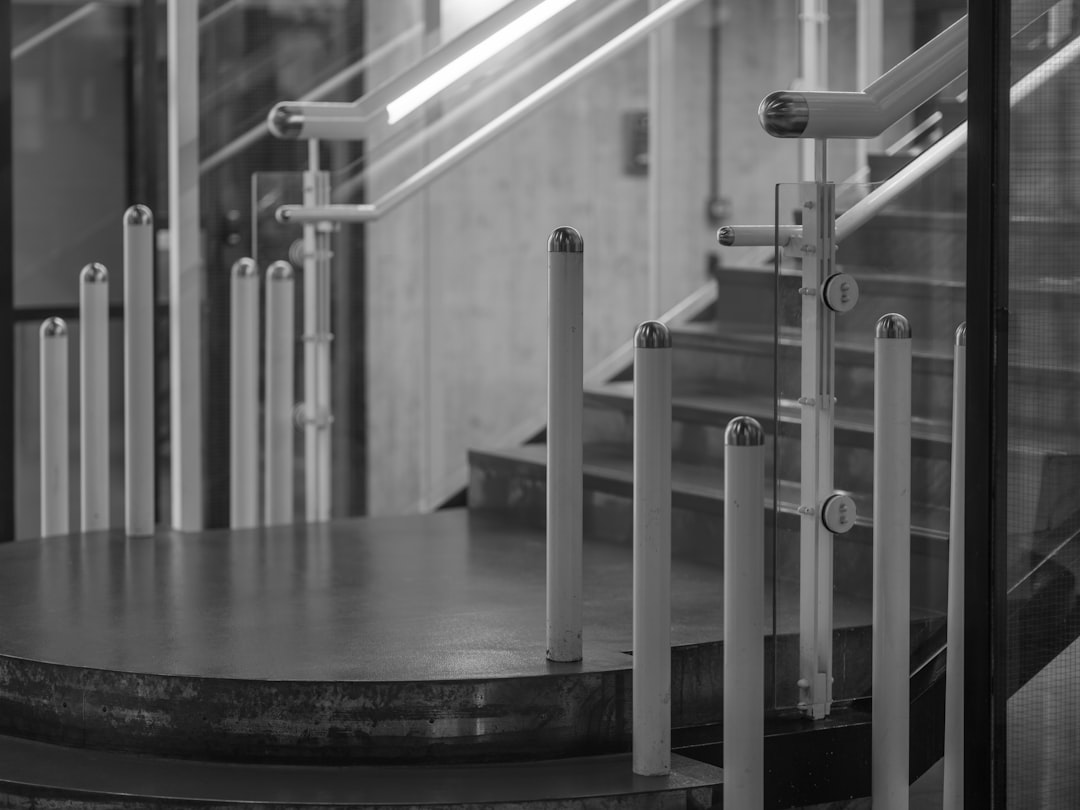

Engage prospects with a scan and streamline customer engagement with FREE QR code marketing tools by Sona – no strings attached!
Create a Free QR CodeFree consultation

No commitment

Engage prospects with a scan and streamline customer engagement with FREE QR code marketing tools by Sona – no strings attached!
Create a Free QR CodeFree consultation

No commitment
QR codes have become powerful tools that connect offline engagement with online action. For floor machine repair services businesses, QR codes provide a seamless and efficient way to handle floor cleaning equipment maintenance, improve communication with customers, and access valuable data, all without the need for app downloads or complex installations.
Operators, repair contractors, and service departments in the floor cleaning industry frequently face issues like missing important support requests due to a lack of digital tracking and insufficient real-time visibility that prevents proactive intervention. Manual tracking, disjointed information, and lost paperwork often result in missed opportunities and can damage reputations in demanding commercial settings.
By using QR codes, floor machine repair service providers can digitize every service touchpoint and user interaction, allowing them to capture maintenance requests easily, surface upsell opportunities, and ensure consistent communication across all service channels. QR codes help resolve issues such as incomplete equipment histories, missed cross-sell moments, and outdated information. The result is more efficiency, greater transparency, and stronger customer retention in commercial equipment repair.

Securing reliable equipment uptime is a major challenge in floor machine repair services. Relying on paper logbooks or disconnected reporting often results in equipment failures that go unnoticed or are not addressed promptly, leading to downtime and dissatisfied clients. Modern QR code solutions bridge the gap between physical assets and digital workflows. They allow any operator, cleaner, or facility manager to scan and report issues within seconds, while giving service teams a verified data trail tied to each machine.
When QR codes are placed directly on machines, service stickers, and in maintenance areas, every scan becomes an entry point into a streamlined digital process. Technicians can review historical data, operators can follow guided troubleshooting, and managers can monitor compliance and performance. This approach replaces scattered phone calls and paper reports with structured, trackable workflows that improve mean time to repair and reduce unplanned downtime.
Automated QR platforms sync scan data with asset records and customer profiles, increasing visibility and enabling swift, data-driven actions. A platform like Sona QR lets you manage dynamic codes, route submissions to the right technician, and update content without reprinting labels. As analog processes are replaced, such as paper checklists or phone-based work orders, customers experience faster response times and technicians arrive better prepared, which improves uptime and satisfaction.

Floor machine repair operations often face disconnects between field activity and office processes. Technicians or operators may spot problems, but slow reporting systems hinder quick communication. Service centers struggle to keep documentation current and to connect field feedback to asset histories. These gaps create missed opportunities to fix issues early and to earn repeat business.
QR codes address these challenges by turning any physical touchpoint into a digital action. A scan can start a ticket, open a troubleshooting guide, pull up a warranty, or request a callback. Because scanning works with any smartphone camera, there is no barrier to entry. You get speed and simplicity for field users, and you gain reliable data and accountability for management.
Integrating QR codes at every important touchpoint transforms field interactions into measurable, valuable moments for engagement. Appointment cards, service stickers, maintenance posters, and work order packets become interactive tools that guide users and feed your CRM with actionable signals. Add them to stickers and labels used on service tags to drive repeat scans.
Many service teams struggle to deliver the right information at the right time, which leads to incomplete forms and misplaced documents. QR codes solve this with flexible formats that match the job to be done. Choosing the right format ensures a scan triggers the correct action and reduces friction for field users.
In floor machine repair services, certain formats prove especially useful for workflows like ticket intake, documentation access, and field communication. Dynamic QR codes are recommended for most deployments because they allow you to change destinations and collect analytics without replacing labels.
Dynamic QR codes keep all resources up-to-date and actionable, ensuring consistency and effectiveness across every workflow. With Sona QR, you can manage web links, forms, and vCards in one dashboard, swap destinations as your processes evolve, and track scan performance by asset and location.

Service providers often miss growth chances at everyday touchpoints such as after-service reporting or repeat customer outreach. QR codes create opportunities by digitizing each place where equipment meets its users. Each placement becomes a chance to capture feedback, secure an appointment, upsell a service plan, or deliver training.
Focus on the placements that align with how floor machines are used and serviced. Facilities such as hospitals, airports, schools, and retail stores have high-traffic cleaning schedules and strict uptime expectations. QR codes placed in these environments can convert routine interactions into data-rich engagements.
Placing QR codes within these workflows ensures that every friction point becomes a data source and a chance to enhance customer experience. By tagging codes per asset or location, your team can see where demand is strongest, which environments produce the most issues, and where to invest in training or upgrades.

Each lost service ticket is a missed opportunity. QR codes streamline communication and make it easier for operators and facility managers to get help quickly while giving technicians context before arriving on site. This reduces back-and-forth calls and improves first-time fix rates.
The most effective use cases tie scans to specific actions that support uptime, safety, and customer satisfaction. Deploy a mix of preventive, reactive, and educational use cases so your QR touchpoints stay relevant throughout the machine lifecycle.
Tie these use cases together with dynamic codes that can be updated over time. As common issues change or new training becomes available, your links can adapt without reprinting labels.
Missed upsell opportunities and anonymous leads are common in equipment services. QR codes help you turn scans into segmented audiences that can be nurtured with targeted messages. Each scan captures context such as the machine model, location, and intent, which can be used for relevant follow-ups. For tactical execution, see Sona’s Playbook titled Intent-Driven Retargeting: Driving High-Impact Campaigns with First-Party Intent Signals.
By deploying unique codes across key touchpoints, you can differentiate between facility managers considering upgrades, operators requesting support, and procurement teams exploring service contracts. The more specific your codes, the more precise your retargeting can be.
With Sona QR, each QR code becomes a smart entry point into your funnel. You can capture data based on real behavior, not assumptions, and build retargeting campaigns that reflect the unique roles in this industry such as operators, custodial supervisors, facility managers, and procurement coordinators.
Inconsistent campaigns frustrate service teams and clients. QR codes create seamless transitions from print to digital and help unify your brand presence across channels. When every print piece leads to a live, measurable destination, you can learn what resonates and adapt quickly.
Floor machine repair providers often rely on printed manuals, service stickers, invoices, trade show materials, and field reports. Each of these can include QR codes that invite a scan and drive meaningful actions such as booking maintenance or exploring upgrades.
QR codes serve as the offline on-ramp to your digital marketing engine. With a centralized platform like Sona QR, you can manage all codes, monitor performance, and sync scan data with your CRM and ad platforms, turning analog touchpoints into measurable marketing assets.
Deploying QR codes thoughtfully ensures strong adoption, clean data, and measurable results. Treat your first campaign as a pilot with clear goals, then scale across additional assets once you understand what works best in your environment.
Below is a practical checklist tailored to floor machine repair services. Use it to guide your rollout and to align teams across marketing, operations, and field service.
Start by identifying the single business outcome you want to improve. For example, reduce mean time to repair for scrubbers by 20 percent, increase warranty registrations within 30 days of sale, or boost service plan renewals for contract customers.
Selecting static or dynamic codes affects future flexibility and analytics. Dynamic codes are usually the right choice for service workflows since they allow updates and provide robust tracking.
Design affects scan rates. Make the code visible and trustworthy so operators feel confident scanning during busy shifts.
Roll out your codes where they will be seen and used most often. Sequence the deployment so that each placement supports your chosen goal.
Measurement confirms what is working and where to improve. Use your analytics to refine placements, messaging, and landing pages.
Providers often find it hard to link engagement data to business results. Modern QR analytics allow you to see how many scans occurred, which assets drive action, and how scans convert into tickets, warranties, or revenue. Without this visibility, teams rely on anecdotal feedback and miss trends that could reduce downtime or grow revenue. For a strategic framework, read Sona’s blog post titled The Essential Guide to Offline Attribution: Maximizing ROI Through Offline Channels.
Tracking should cover the full journey from scan to outcome. That means capturing not only the scan event but also the form submission, appointment scheduling, parts order, or contract renewal that follows. With Sona QR and Sona, you can connect these dots and see how QR campaigns impact pipeline and closed business.
Automated tracking gives field teams actionable insights without added manual effort. Reports can highlight the top scanning assets, the most common repair intents, and the pages that drive the fastest conversions, enabling continuous improvement.
Repair businesses can overcome incomplete histories and inconsistent outreach by standardizing how QR codes are deployed and how the resulting data is used. A few pragmatic best practices can multiply scan rates and conversion outcomes across your fleet and customer base.
Prioritize tips that match your most common media, such as equipment stickers, service tags, invoices, and printed brochures. Always pair each QR with a clear, benefit-driven call to action so users know exactly what they get by scanning.
Creative deployments can also increase engagement. Add a QR on machine skirting that links to a two-minute daily care video, or place a QR on invoices that opens a one-click service plan renewal page. These simple touches reduce friction and increase repeat business.

Learning from peers accelerates adoption. The following examples illustrate how QR-enabled workflows create tangible operational and commercial gains in floor machine repair services.
Real outcomes come from consistent deployment across assets, timely follow-up, and thoughtful content. Use these stories to inspire your pilots and to set benchmarks for your own programs.
QR codes offer floor machine repair services a direct, effective solution to common challenges like lost activity, missed revenue, and disconnected workflows. When every touchpoint connects to actionable data, teams respond faster, personalize service, and move more prospects from interest to satisfied customer. Equipment uptime improves because reporting is simple, documentation is current, and analytics reveal where to focus.
QR codes are transforming how floor machine repair services manage equipment, data, and customer relationships, turning lost opportunities and outdated processes into drivers for business growth. Introducing QR touchpoints to your key assets speeds up repairs, unlocks new insights, and strengthens client connections at every interaction. With Sona QR, you can generate your first dynamic codes in minutes, manage destinations centrally, and connect scan activity to your CRM and performance dashboards.
If you are ready to modernize service intake, training, and upsell motions, start with a pilot on your most-used machines and service stickers. Track scans, measure conversions, and iterate quickly. The organizations that move early will set new standards for responsiveness and reliability in commercial floor care. Start creating QR codes for free.
QR codes have transformed floor machine repair services from manual, time-consuming processes into efficient, data-driven interactions. Whether it’s streamlining equipment maintenance, enhancing technician access to repair guides, or improving customer communication, QR codes replace guesswork with instant, mobile-friendly solutions that capture real-time engagement and boost service accuracy. Imagine technicians instantly accessing the exact repair history and troubleshooting steps right at the machine, reducing downtime and elevating customer satisfaction.
With Sona QR, you can create dynamic, trackable QR codes in seconds, update repair instructions without reprinting, and link every scan to improved operational efficiency and client trust. No more lost manuals or delayed fixes—just smarter, faster service that keeps your floor machines running smoothly. Start for free with Sona QR today and turn every scan into a seamless repair experience and stronger customer relationships.
Use QR codes placed on the machine to access model details, repair history, and troubleshooting guides that enable faster maintenance requests and guided problem resolution.
Common issues include missed support requests, incomplete equipment histories, manual tracking errors, and slow communication that lead to unplanned downtime and inefficient repairs.
Regular preventive maintenance should be performed according to manufacturer guidelines, supported by digitized daily checks and scheduled service reminders enabled through QR code tracking.
QR codes digitize service requests, improve communication, provide real-time data access, reduce paperwork, enable faster repairs, track compliance, and create opportunities for upselling and customer retention.
Look for service providers who deploy dynamic QR code solutions like Sona QR to manage maintenance workflows, track scan data, and integrate with CRMs for efficient floor machine repair services.
QR codes enable instant issue reporting, provide access to troubleshooting resources, and create verifiable data trails that reduce back-and-forth calls and improve first-time fix rates.
Dynamic QR codes with web links, vCards, SMS or email pre-fills, Wi-Fi access, and app download prompts are most effective because they allow updates, analytics, and seamless user interactions.
They digitize daily equipment checks, track maintenance schedules, provide warranty and safety information on demand, and support automated reminders to improve compliance and reduce downtime.
Place QR codes near control panels, battery compartments, and service tags with clear calls to action, ensure codes are large and visible, test scanning across devices and lighting, and use unique codes per machine or location.
QR codes enable data-driven retargeting by capturing user intent and scan context, allowing personalized follow-ups, upsell campaigns, and measurement of engagement across multiple channels.
Use Sona QR's trackable codes to improve customer acquisition and engagement today.
Create Your FREE Trackable QR Code in SecondsJoin results-focused teams combining Sona Platform automation with advanced Google Ads strategies to scale lead generation

Connect your existing CRM

Free Account Enrichment

No setup fees
No commitment required

Free consultation

Get a custom Google Ads roadmap for your business






Launch campaigns that generate qualified leads in 30 days or less.
